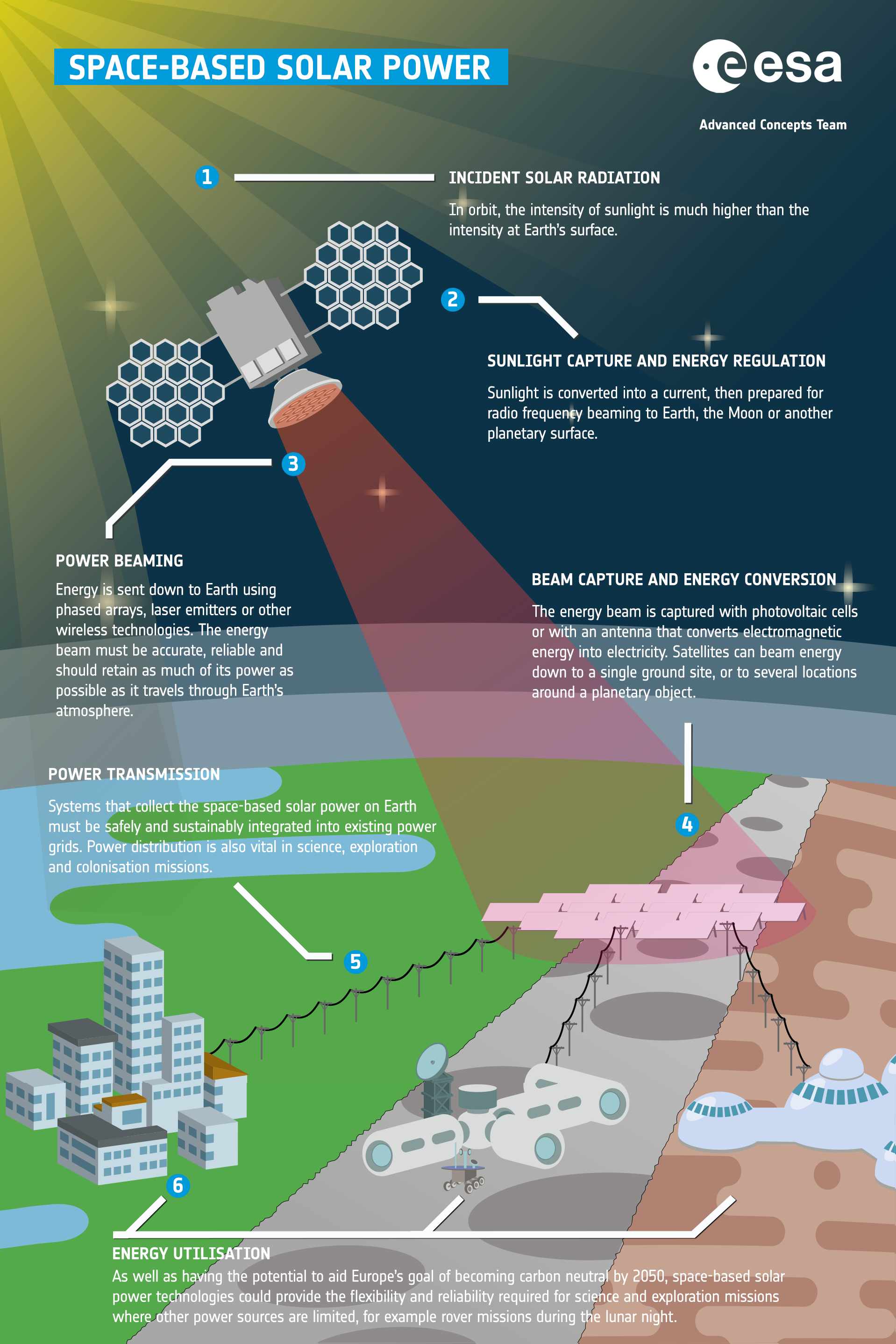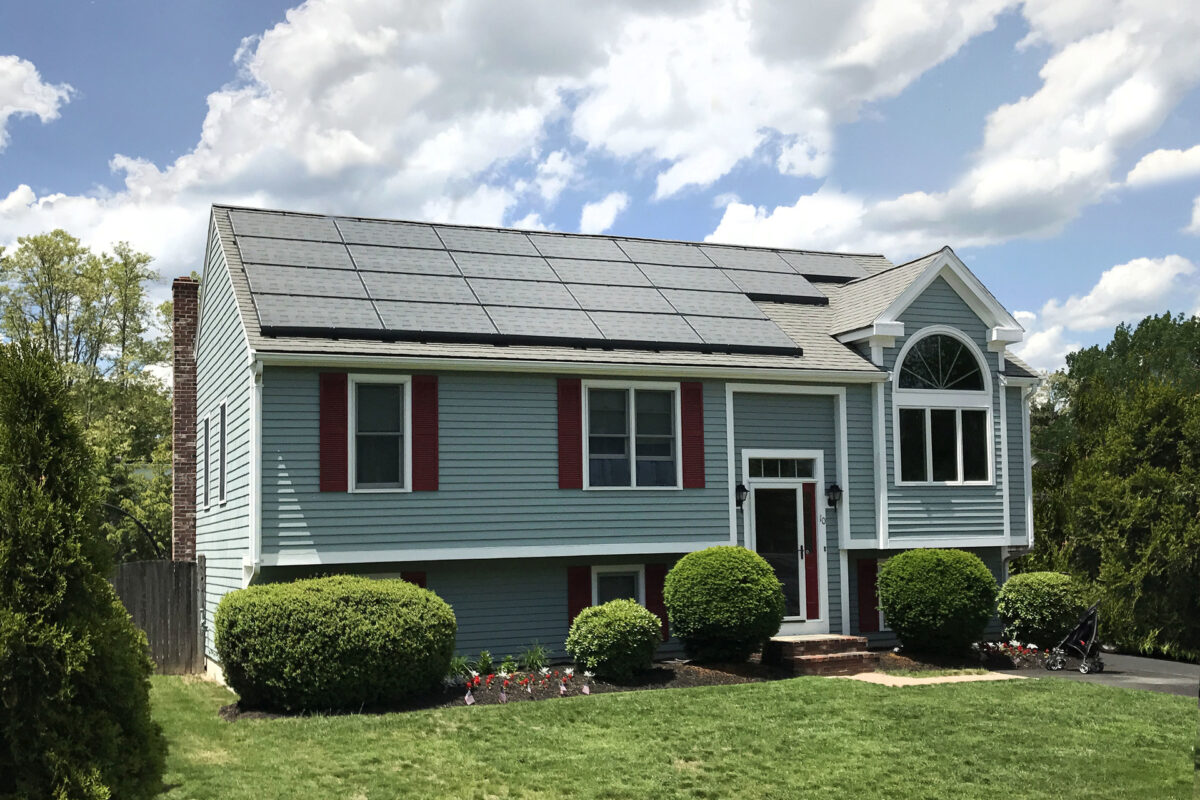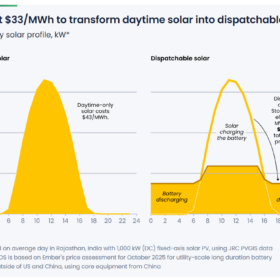Space-based solar power (SBSP) developers seek to harvest the sun’s energy in space and transmit it to receiving stations using wireless power transmission, either via microwaves or lasers. On a commercial scale, the technology could provide limitless clean energy anywhere on Earth unaffected by weather or day/night intermittency.
A panel of SBSP developers and analysts agreed that maturing technology and rapidly decreasing launch costs are bringing the concept closer to reality. In fact, power generation projects are scheduled to head into orbit early as next year and customers are buying in.
“SBSB certainly seems to be having a moment,” said Jason Rainbow, a senior writer and business intelligence manager at SpaceNews, who moderated the August 14 online live event. “Around $100 million of private capital has been invested in the technology in the last six months.”
The concept of putting solar photovoltaic power plants in Earth orbit with unobstructed line-of-sight to the sun is attractive on its face. Solar has powered probes and satellites since the dawn of the Space Age and scaling up to commercial power generation seems like a natural progression. Up until now, the problem of orbital assembly, wireless power transmission and, most importantly, financing have grounded all but a few research projects.
“Why now rather than earlier?” asked John Mankins, a pioneer in SBSP technology now focused on developing and commercializing new space systems. “The answer is really embedded in all of the huge changes that are taking place in the space technology and space systems landscape right now. In particular, the emergence of reusable launch systems that have reduced the cost of access by an order of an order of magnitude.”
Mankins reported that launch costs that were around $10,000/kilogram in 2000 have since fallen to just over $1,000/kg today. Costs could be on their way to $100/kg in another 20 years, according to forecasts by Citi Research. In Mankin’s view this trend supports his vision for large solar arrays in geosynchronous orbit that would deliver power to Earth using microwaves.
The SPS-ALPHA concept he advocates incorporates thousands of PV modules and concentrating reflectors in a node-and-truss structure capable of dispatching tens of megawatts to several gigawatts of power to receivers on the ground. Mankin said as an example that an SBSP system like SPS-ALPHA deployed in a geostationary orbit at the latitude of Mount Kilimanjaro could serve markets from South Africa to Northern Europe.
According to Mankin, all of the technology underpinning the SPS-ALPHA concept exists and manufacturing costs for its components are He says the main roadblocks to the concept are project financing and getting the International Telecommunications Union to designate an appropriate band of the spectrum for microwave energy transmissions. Another problem is the lack of experience in assembling large disbursed structures in space in a timely way.

Image: ESA
There are SBSP projects in the works that if less ambitious are closer to getting off the ground. Colby Carrier, head of business development for California-based Aetherflux said his company is developing an approach that uses many satellites in lower orbits with integral solar collectors that transmit power by infrared laser to small ground stations. Aetherflux has attracted over $50 million in venture capital and has a grant from the Department of Defense’s Operational Energy Capabilities Improvement Fund to deploy a prototype.
“We booked our first launch with SpaceX happening in 2026,” Carrier said.
The current Aetheflux design is geared toward providing power to off-grid users, with the U.S. military as its first customer. Carrier said the challenges in the Indo-Pacific, trying to get ships with fuel and trucks and generators into contested island chains, is a problem the military is wrestling with right now.
“If we’re able to just send power where it needs to go, I think that’s really compelling, which is why we’ve been given a contract,” he said.
Many of the same advantages of providing SBSP for far-flung military operations also apply to disaster-relief operations or supplying power to island communities and those in remote regions in the developing world not served by electrical grids. The combination of existing demand and improvements in the economics of space-based infrastructure is why SBSP is “having a moment.”
Martin Soltau, co-CEO of UK-based Space Solar, said the best way for SBSP developers to meet this moment is to prove the concept by satisfying energy demands that are critical but are also on relatively modest scales. While Space Solar has a concept for a 1.4 GW satellite in geostationary orbit that is 1.4km in diameter, this will be some time coming.
“The ultimate systems with hundreds of megawatts or gigawatt capacity need to be in a high-Earth orbit for high utilization,” Soltau said. “Because your first systems will cost many billions of dollars, you’ve got very high cost of capital for early infrastructure and it’s just really difficult to to get that financed.”
As a result, Space Solar is developing relationships with potential clients in niche markets.
“If you put a satellite into a polar orbit, low-Earth orbit, the sort of clients there, polar research stations pay insane amounts for their energy,” he said. “They find it very difficult to decarbonize. We’re workingreally closely with the British Antarctic Survey and others. I think there are a number of early markets where particularly they need off-grid power.”
Ultimately, the success of SBSP depends on the developers finding markets that can fund larger projects in the future. Karen Jones, a senior project leader at The Aerospace Corporation, a non-profit think tank devoted to space policy and technology advancement, said the dynamic between advocates and sources of financing balance on results. The technical trends in terms of space launch, component manufacturing and demonstrated performance of renewables on the grid argue in favor of solar’s future in space. The challenge for developers is making a case to investors in an increasingly competitive energy environment.
“The solar energy industry on the ground is actually a terrific partner down the road,” Jones said, explaining that the same utility-scale solar farm taking up thousands of acres could host a SBSP receiving antenna. This would give that facility 24/7 power when right now they have to deal with the day and night limitations and other intermittency issues.
“So I think in the future, we’re going to start to see some compatibility and partnerships emerge from this,” she said.
This content is protected by copyright and may not be reused. If you want to cooperate with us and would like to reuse some of our content, please contact: editors@pv-magazine.com.









By submitting this form you agree to pv magazine using your data for the purposes of publishing your comment.
Your personal data will only be disclosed or otherwise transmitted to third parties for the purposes of spam filtering or if this is necessary for technical maintenance of the website. Any other transfer to third parties will not take place unless this is justified on the basis of applicable data protection regulations or if pv magazine is legally obliged to do so.
You may revoke this consent at any time with effect for the future, in which case your personal data will be deleted immediately. Otherwise, your data will be deleted if pv magazine has processed your request or the purpose of data storage is fulfilled.
Further information on data privacy can be found in our Data Protection Policy.